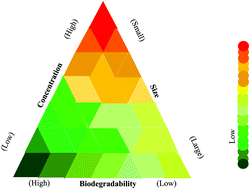The framework of nanopesticides: a paradigm in biodiversity
Abstract
Nanotechnology has imparted excellent substitutes in the area of agriculture for the management of insect pests without deteriorating the surrounding biota and thereby allows a more verdant environment. Particular idiosyncrasies have arisen in innovative nanoagrochemicals due to the viable applications of nanotechnology in a myriad of agricultural settings. Concerns have been raised about the need for novel products, therefore they have been predicted to have considerable potential to underpin the obligatory increase in worldwide food production in a sustainable manner. Conventional strategies like assimilated pest management employed in agriculture are inadequate and the application of chemical pesticides has pernicious impacts on the environment and mankind. There is a dire need to develop a repository of safe and propitious formulations to implement a regulatory paradigm for nanopesticides. Nanopesticides are well known in agriculture to reduce costs, improve the outcomes of agricultural products and enhance shelf life and nutrition. Much research has presented the innovation in a range of industrial domains that allows the improvement in the effective use of nanopesticides in water, nanocapsules for the delivery of biocides, nanosensors for the detection of pests, etc. Furthermore, the current consumption pattern of nanopesticides and their health repercussions has been elucidated. This much needed discussion will address the gap between the need for adequate control, environmental efficacy, associated benefits and the detrimental impacts of nanoagrochemicals.



 Please wait while we load your content...
Please wait while we load your content...